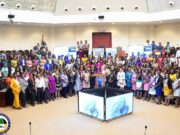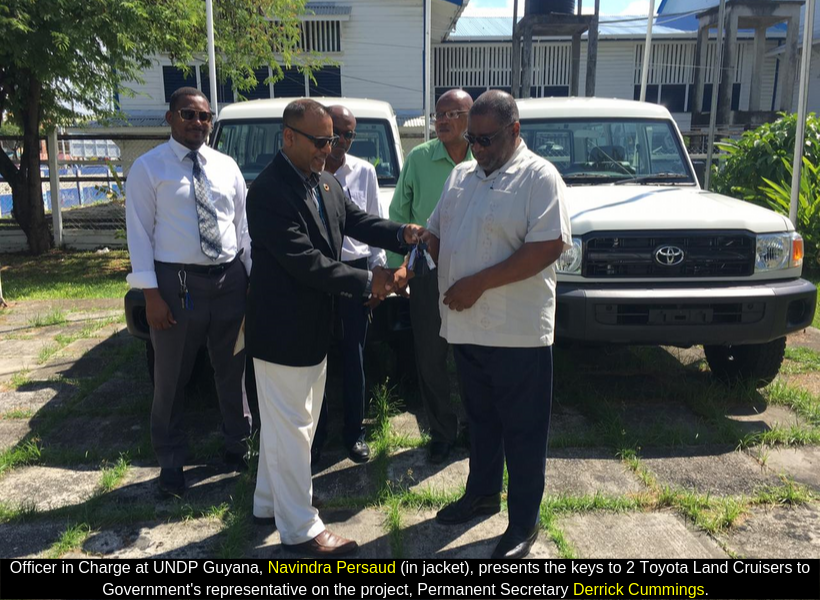The Ministry of Public Telecommunications (MOPT) says that it is not letting up on its mandate to close the gaps in quality-of-life and access to public services between the coastland and interior regions. This was iterated in a statement the ministry released to the media.
MOPT noted that in addition to the broad scope of work being executed by the eGovernment arm of the National Data Management Authority (NDMA), it has to date equipped 72 hinterland/inland communities with satellite dishes, computers and, in some areas, solar energy panels. “Residents in most of these remote villages have never before had such easy access to information from around the world, nor to other means of communication besides letter writing and word of mouth.”
MOPT said that the “embrace to our hinterland” is part of that wide-ranging MOPT Project which is being overseen by the United Nations Development Programme (UNDP), and funded through the Guyana REDD+ Investment Fund (GRIF). The programme, titled: “ICT Access and e-Services for Hinterland, Poor and Remote Communities” (HPRC), was signed into being late 2017 but it got off to a slow start.
The statement read that in the interim, the NDMA which is executing all of the project’s deliverables started procuring Satellite (VSAT) dishes, solar panels, equipment and fittings since 2018 utilizing the Government of Guyana (GOG) funds while they waited for disbursements from the UNDP. MOPT said that NDMA’s engineers also started the groundwork in the remote and hinterland villages since 2018, installing satellite dishes and Wi-Fi connection equipment.
Further, the Ministry said that according to HPRC Project Co-ordinator, Phillip Walcott, that 2018 decision to start the groundwork is now allowing them to catch up with the benchmark/delivery schedule. The schedule indicates that the 5-year project which began officially with the signing of the Agreements in 2017, is expected to be concluded in 2022. Mr. Walcott added that so far, the GoG has covered over 75 percent of the project costs.
MOPT said that just this week, the HPRC received the first two project vehicles—two thirteen-seater 4WD Land Cruisers and one Hiace 15-seater minibus. These have been added to the fleet of NDMA’s vehicles that were put on the project to transport personnel and equipment to project sites.
Villages connected to the Web
The ministry noted that the project identifies 200 hinterland locations for Internet connections. Of that number, 72 villages are already online including Port Kaituma, Kabakaburi, Aishalton, Surama, and Yupukari.
Before the end of 2019, another 24 communities will be connected via satellite dishes. Included in these communities are Parabara, Shiriri, Rupunau, Shea, Monkey Mountain, Ituni, Old England, Kumaka, Ebini and Mabura.
Whereas in the city and towns, preparations for new Community ICT Hubs require volunteer work from residents who choose their space, usually a room in a Community Centre, construct cubicles and install electrical fittings. The NDMA would then supply Wi-Fi connections and donate computers for residents to access the Internet free of cost.
“But the project takes a broader approach in these remote areas. Wi-fi equipment is being installed in hospitals and health centers to enable health professionals there to practice telemedicine; as well as in village meeting places, multi-purpose centers, and schools.
At the same time, training programmes at Basic and Intermediate levels have begun for Hinterland residents. In Region 8, the MOPT’s Innovation Department has already completed an intensive Train-the-Trainers programme for 27 persons drawn from communities surrounding the Iwokrama River Lodge & Research Center – Wowetta, Fairview, Surama, Rupertee, Kwatamang and Annai,” the statement read.
The Impact
According to the ministry, “Today, residents in the identified hinterland communities no longer have to wait until newspapers arrive for news, as they have been doing for generations. They can now access the web free of charge, at any time, on their computers, cellphones and tablets. They are now able to call and text with their children who live far away from home in school dormitories, e.g. at St. Ignatius Secondary in Lethem.
The women manufacturers of peanut butter in Aranaputa now stay in close contact by email, WhatsApp and telephone with the New Guyana Marketing Corporation and the Agriculture Ministry in Georgetown. More recently, a young entrepreneur at Rupertee used his cellphone to fill out and submit his application online to the Small Business Bureau in Georgetown for micro-financing without leaving his village.”









